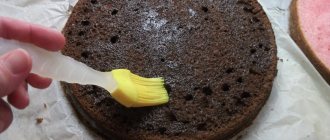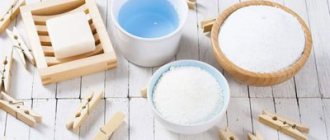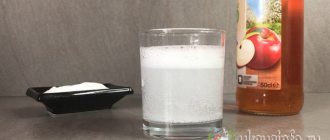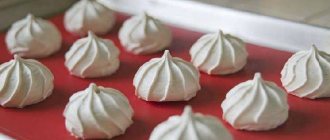The most popular base for all kinds of desserts is sponge cake. Delicate, airy, it is good with any cream or even on its own. But impregnation must be done in any case, otherwise the cake will be dry. Moreover, this rule works for rolls, cakes and pastries. Lemon impregnation for sponge cake allows you to quickly prepare an excellent dessert for adults and children.
General principles
Beginner cooks make common mistakes. The first is that a very thick cake is baked. There is no chance of soaking it, and the inside will be dry and dull. The second mistake usually follows the first. When trying to make the perfect dessert, the next time it is poured with all your heart. The result is a sponge that resembles soggy bread and leaves puddles of syrup on the plate. This is also not an option at all.
Traditionally, ordinary sugar syrup is used for these purposes. To do this, take 1 part sugar to 2 parts water and boil. After cooling, add rum or liqueur, fruit juice or coffee, cognac, essence. Lemon impregnation for sponge cakes is popular. It is very important not only to prepare it correctly, but also to apply it to the cake. Here you need to take into account all the details:
- Number and thickness of cakes.
- Cream used.
- Will you be adding nuts, fruit or chocolate.
All this will ultimately affect the moisture content and taste of the finished product. Therefore, confectioners draw up technological maps that take into account all the subtleties.
Lemon impregnation for a sponge cake is a fairly easy way to revive a dry cake and give it some zest. But too thin syrup and thickened impregnation are common problems, and following a proven recipe will help you avoid them.
Correcting errors
If you overdid it with the amount of impregnation and your cake “ran,” then it is recommended to place it on a clean sheet for a while: it will remove excess moisture.
In order to have a delicate and unique taste, the cakes must be treated with various types of impregnation before applying the cream. This will ensure a closer proximity between the biscuit and the cream, and will also make the dessert juicy and balanced. Any sour-sweet or sweet liquid is suitable as a suitable substance for this purpose.
What is the best way to soak sponge cakes?
It is impossible to say for sure what will be better in a particular case. It all depends on the combination of the taste of the biscuit and cream, as well as the accompanying fillings. The impregnation should harmoniously complement the taste of the dessert, and not interrupt it in any way, depriving its main components of the ability to reveal their aroma, tenderness and richness.
The simplest option for impregnation is regular sugar syrup. Moreover, you can determine its concentration according to your taste. Traditionally, it is prepared from 250 milliliters of boiling water and 100 grams of granulated sugar. If you wish, you can acidify the syrup with lemon juice, replace sugar with honey, and also flavor it in any available way. When preparing a cake for an adult audience, it is possible to use alcoholic beverages as an additive to the syrup. Cognac, rum, brandy, or liqueurs with a wide variety of flavors are suitable for this purpose.
You don’t have to prepare the syrup on purpose, but use what you have on hand. For example, any berry or fruit juice, sweet compotes or jam syrup can be a worthy impregnation, the main thing is that the chosen option is combined with the taste of the dessert itself. Alternatively, you can use syrup from canned fruits.
Many housewives successfully soak sponge cakes with ordinary tea leaves, to which granulated sugar and lemon juice are added to taste, or with freshly brewed and chilled coffee.
How to soak sponge cakes correctly?
Having decided on the type of impregnation used, it is very important to apply it correctly for its intended purpose. It is better to use a pastry brush for this, moisten it a little in the sweet mixture and apply a thin layer to the biscuit. But you can, of course, use an ordinary teaspoon, scooping up just a little bit of syrup, transferring it to the crust and distributing it evenly over the surface. You should not apply too much impregnation, otherwise the sponge cake will become soggy and the taste of the cake will be hopelessly spoiled.
It is very important to apply cold impregnation to already well-cooled cakes. Better yet, let them sit for a few hours after baking. Then the risk of excessive wetting will be minimized.
How to soak store-bought sponge cakes?
Many housewives wonder: do they need to soak store-bought ones? The answer here is ambiguous. If you use sour cream or any other cream with a high moisture content, as well as a lot of juicy fruits as an additional filling, then the soaking here will probably be unnecessary and the cakes may become excessively soggy. In other cases, you can soak the workpiece just a little with any syrup.
Rules for beginners
If you like dry biscuits, then you can limit yourself to lightly grease the cake with a silicone brush, and then apply cream. But most often children prefer moist biscuits. Moreover, if you want to please your sweet tooth, then take the classic 2:1 ratio as a basis. And if you want to prepare a not too sweet treat, then it is better to change the ratio of water and sugar to 3:1.
If you want the solution to linger in the pores, then add a little starch to it.
The more sugar you add to the syrup, the longer the finished product will stay fresh.
If the biscuit turns out to be very wet, simply wrap it in a clean cloth. It will absorb excess moisture.
Processing cakes
When you take a hot crust out of the oven, you don't have much time. Experienced pastry chefs say to cut, soak and shape before it cools completely. This requires skill. In addition, the cakes should not be too thick, otherwise they will be dry inside anyway.
Lemon impregnation for sponge cakes is a liquid syrup, so working with it is quite easy. Applying hot composition is a separate science. Housewives often use a teaspoon for this. This is quite inconvenient, and the liquid gets onto the dough unevenly. It is best to use a pastry brush or spray bottle.
One more thing. The biscuit allows liquid to pass through like a sponge. Therefore, if you soak it with syrup, you need to apply the very minimum composition to the bottom cake. Soak the middle cake moderately, but you can pour liberally onto the top cake. This syrup will gradually pass through all floors of the confectionery product.
Little secrets
How to make a cake juicy, but at the same time prevent it from swelling into an incomprehensible mass. We reveal little secrets during the cooking process:
- The top part of the cake is processed generously, the middle part less, and the bottom lightly. The liquid flowing from above wets the lower layers.
- Start the process from the middle to the edges.
- The syrup is not poured onto the crispy crust, but the crust is cut and turned cut side up.
- Excess liquid around the sponge cakes and on the surface is removed with a paper towel.
- The biscuit must cool down. A hot one will get wet and fall apart. We use syrup only at room temperature.
- Chocolate impregnations are applied immediately, otherwise they will harden.
- Before the procedure, the cake must stand for at least half an hour.
- Any dry baked goods will be saved by impregnation.
- Syrups based on milk, honey, condensed milk are suitable for light biscuits; any for dark ones.
- All ingredients must be combined harmoniously. For example, chocolate pastries will play in tandem with coffee, vanilla, cognac, and condensed milk. Cake with a layer of jam, poured with liqueur or water with jam. Cream and custard are combined with lemon or orange, honey and white wine.
- Before determining the amount of syrup, do not forget that the cream also releases moisture into the cake.
- The prepared mixture should be as thick as 15% sour cream. If the pulp is too liquid, it will become limp; if it is thick, it will not soak through and will lie unevenly. It's better not to top up than to overdo it.
- Impregnation gives additional sweetness and the cake can become cloying. You can reduce the sweetness, but not by changing the proportions, but by using a cream or layer, putting less sugar in them.
- Before serving, cool the cake under film for at least 5 hours. It will become dense and will crumble less, as the syrup will be distributed evenly.
Cake is what guests always look forward to at the end of a festive celebration. Therefore, every housewife tries to make it soft, tender and melting in the mouth.
Syrup is an important element that will make you admire the product, especially if it is selected and executed correctly. Otherwise, the cake may become cloying, bitter or sour.
The correct impregnation is moderately sweet and aromatic and always softens baked goods. Do not ignore this important stage and forget about it. Our tips above will definitely help you choose the right syrup and make the perfect cake.
Basic impregnation recipe
Lemon syrup for soaking sponge cakes is one of the varieties, of which there are quite a few. But its basis is sugar syrup. This is the base. It needs to be mastered so that you can move on.
In the recipe that we will now get acquainted with, the amount of ingredients is enough to soak a sponge cake made from five eggs. Based on this, you can calculate how much you will need for your cake.
Have to take:
- Water - 10 tbsp. l.
- Sugar - 6.5 tbsp. l.
The preparation itself cannot be called difficult. Pour water into a saucepan, add sugar and place on low heat. Bring the syrup to a boil and immediately remove from the stove. Before use, be sure to cool to room temperature. The recipe for lemon soaking for sponge cake, which we will now look at, is not very different from the basic one, so you can easily master it.
Calculation of the required quantity for the cake
To understand how much impregnation is needed for a cake, it is important to weigh the sponge cake and count according to the proportion of 1 to 0.5. For example, the weight of the cakes is 500 g, which means that you will need 250 g of syrup. A classic sponge cake made from 6 eggs weighs approximately 400-500 g. If fruits and berries are used, then the amount of syrup is reduced, otherwise the cakes will become soggy.
To obtain a moist cake, the proportions are slightly different - 1 to 0.8. But these numbers are approximate. You can navigate according to your taste.
There are products that do not soak at all, for example, red velvet cake. Classic desserts will only become tastier after soaking.
Fragrant dessert
Moist cake with a citrus aroma is a refreshing option for sweets for tea. It will require a light cream made from cottage cheese or yogurt, but not oily. At the same time, preparing the syrup is very simple. It will saturate a biscuit of any thickness. You will need:
- Water - 500 ml.
- Sugar - 90 g.
- Lemon - 1 pc.
- Cognac - 4 tbsp. l.
The recipe for syrup for soaking sponge cakes is quite variable. Alcohol can be replaced with any other alcohol or removed altogether. It won't get any worse. The first step is to zest the lemon. To do this, a thin layer is removed. Combine water and sugar in a saucepan, add zest and bring to a boil. Add lemon juice and remove from heat. When the syrup has cooled completely, pour in the cognac.
Milk syrup
As a rule, even the fluffiest sponge cake without “wetting” ends up tasteless. Milk syrup will saturate the biscuit and at the same time give the cake a creamy taste, and notes of vanilla - a special aroma. Milk-based impregnation can be confidently used for store-bought (purchased) cakes.
Milk syrup
There are many recipes for milk impregnation: from plain, condensed or concentrated milk, cream or sour cream. After dilution with vanillin, all impregnations have the same refined taste.
| Ingredients for impregnation | Cooking method |
|
|
According to this recipe, there is enough milk syrup for a cake with a diameter of more than 20 cm.
Orange summer
Let's continue to look at what to soak the biscuit with. It is better to master several cooking recipes. Then you will be able to please your family with fragrant sweets every day and will not bore them with the monotony. This syrup is best for soaking chocolate cakes and muffins. It turns out moderately sweet, with a slight bitterness and sourness. You need to prepare:
- Oranges - 2 pcs.
- Sugar - 4 tablespoons.
- Water - 2/3 tbsp.
- Cognac - 4 tbsp. l.
First of all, remove the zest from the fruit and squeeze out the orange juice. Now mix sugar with water, add zest and juice and boil for a minute. When the syrup has cooled, add alcohol if desired. Orange and lemon impregnation for sponge cakes are well suited for preparing summer desserts, when you don’t want to use heavy creams, but your soul asks for something light and tasty.
With cherry juice
This fruit impregnation is used to enrich the taste of chocolate confectionery delights. You will need 50 ml of cherry juice, 35 g of sugar, 200 ml of water (boiled, cooled). If you want to add an interesting note to the cake, add 50 ml of cognac.
The cherry juice is heated slightly, then mixed with a sweetener and waited for complete dissolution. Add water and cognac to the resulting mass. Mix and use as directed.











